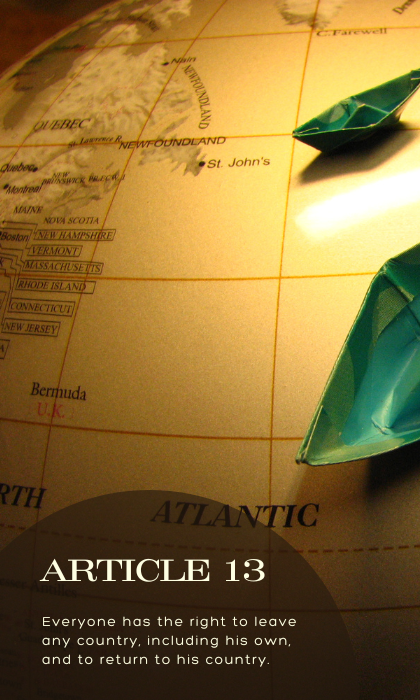
Image editor used: Canva Pro.

Image editor used: Canva Pro.

Photo Editor: Canva Pro
Article 25 taken from The Universal Declaration of Human Rights.

Terms of Use: “Everyone” by Olivia Samimy is licensed under CC BY-NC-ND. It is a derivative of “Otay Detention Center” by “BBC World Service” from Flickr licensed under CC BY-NC 2.0.
This image was edited using Canva. Article 14 is from the Universal Declaration of Human Rights.

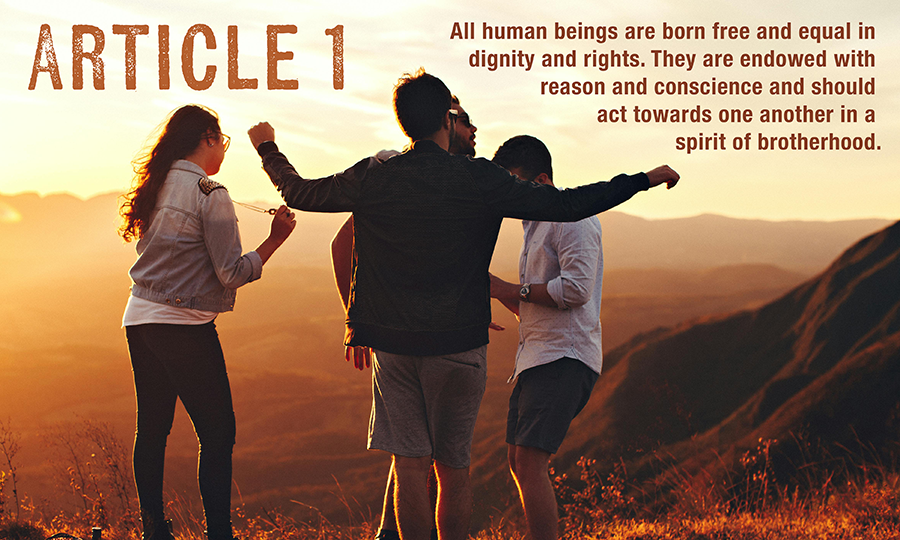
Photo Editor: Adobe Photoshop. “Article 1” taken from the United Nations’ Universal Declaration of Human Rights.
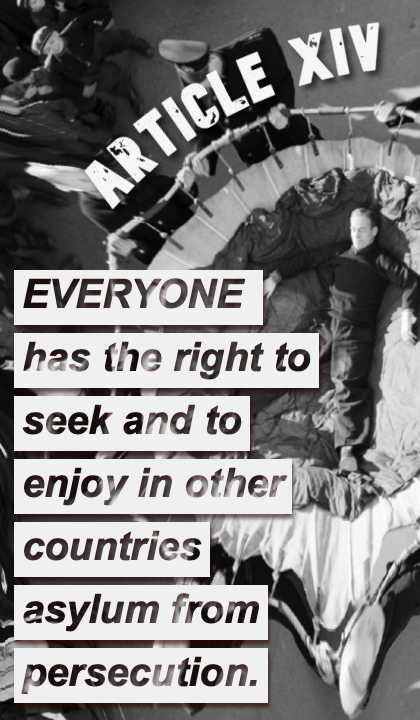
Photo Editor: Pixlr Editor
“Article XIV” taken from the United Nations’ Universal Declaration of Human Rights
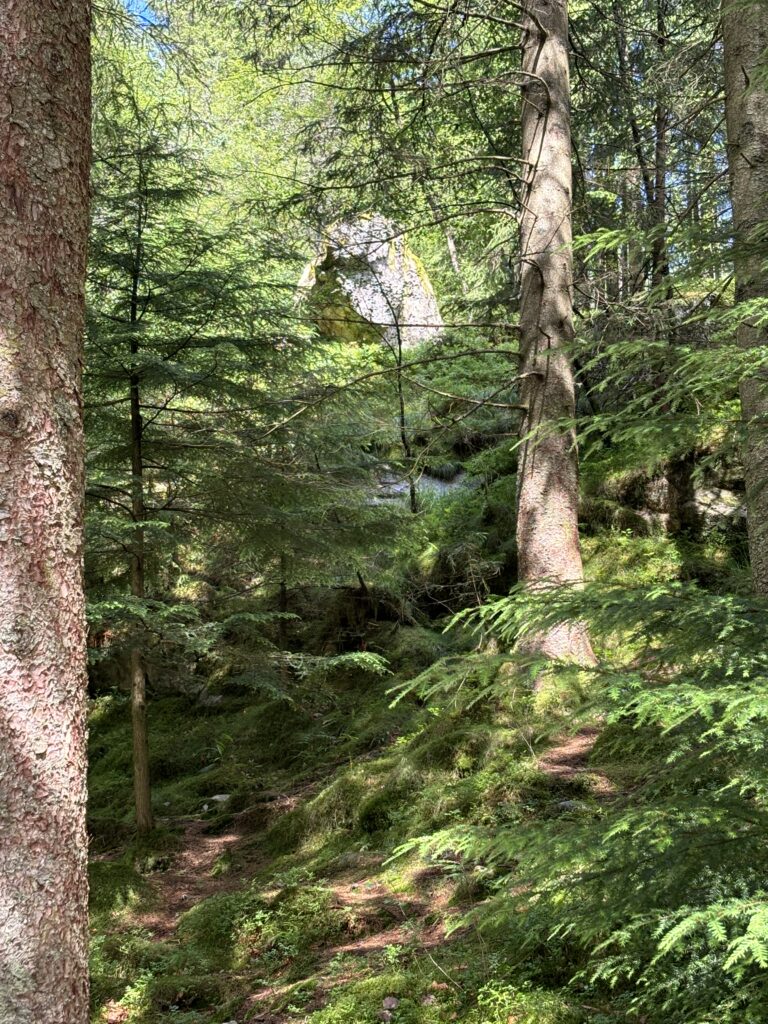
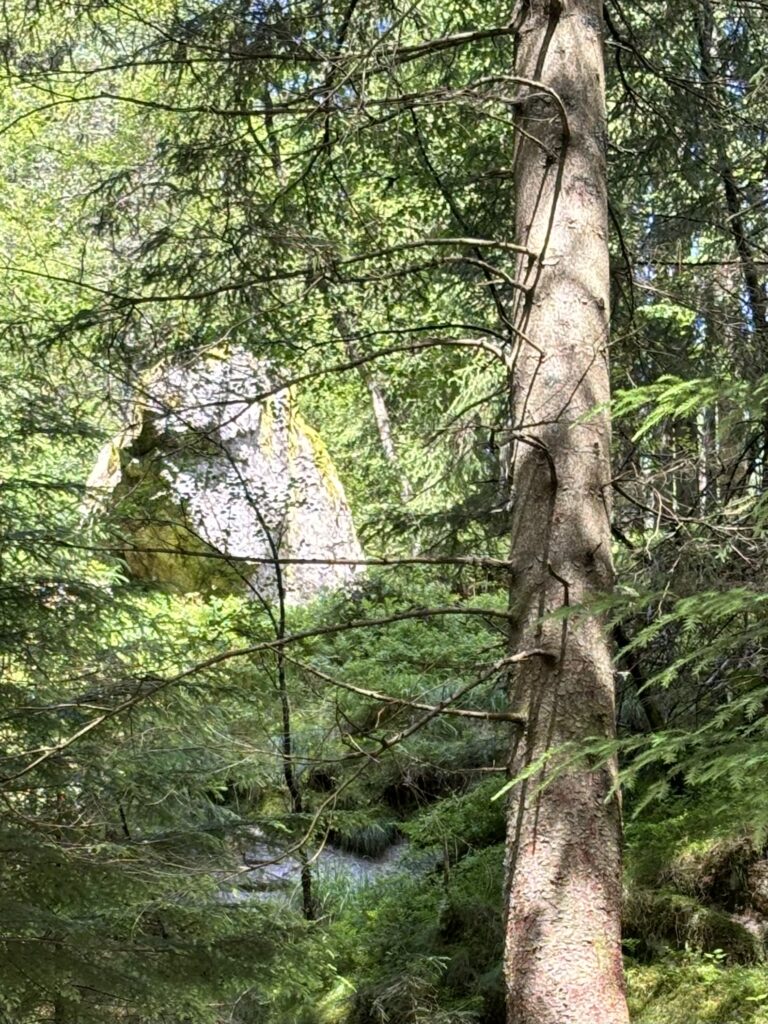
This is a photo I took on my trip to Norway in June of 2024. Norway is steeped in folklore and stories of mountain Trolls is prevalent. When my companions and I climbed Mount Floyen in Bergen, Norway, the park and its signs, leaned heavily into these stories, warning climbers to beware of the trolls as they hiked. Most of the hike was beautiful and uneventful- besides the trials of climbing a mountain obviously. But as my companions and I finally descended the mountain we caught a glimpse of this big form staring down at us from the cliffside above. The original captures the immense climb that separated us and kind of down plays the face my friends and I thought we saw- it could be mistaken as just a big boulder. In the crop I focused on zooming in on the face so that it can be seen, but still capturing that it is staring down at us by focusing in on the giant tree in the foreground.
So where the original could be mistaken as just a rock- kind of like the blurry Loch Ness Monster Photo, the cropped version seems to showcase a curious, otherworldly creature hiding among the trees.
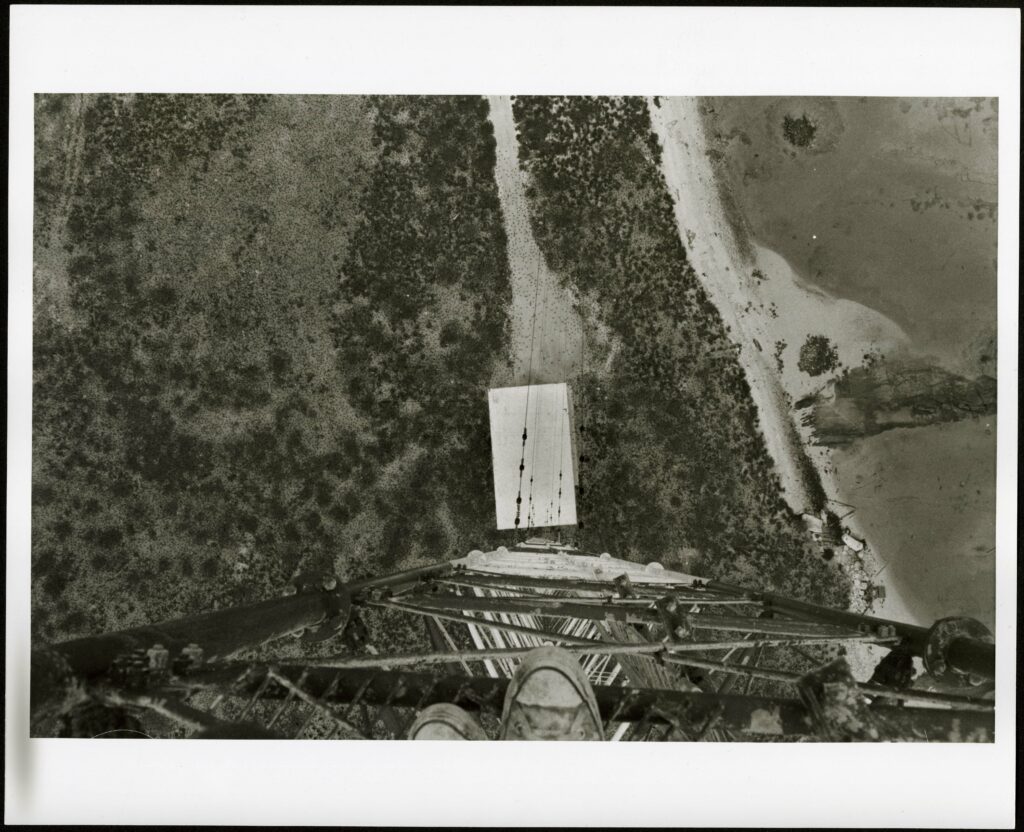
As I was looking through Flickr’s Smithstonian Gallery, debating what I could use to tell a story, I found this folder entitled ‘Loran’. The word was so similar to my name that I was heavily intrigued and clicked on it. the picture to the left is one of the ones that popped up. It is taken from a bird’s eye perspective, looking down at the ground.
It seems these towers are everywhere around the world transmitting radio signals for ships and aircraft. I never once thought to learn their names because for all of their hard work and talents, they never stood out. And yet their job is one of the most important jobs: to give data to towers so people can fly across our world, to visit their loved ones or to take a trip.
When I went to crop it, I realized how important the shoes were in this picture. The dirty converses tell a story of their own as the toes of them peek at the bottom of the original photo. Without them, the photo turns into this bridge with a mountain at the other side. The bridge looks to be held up by wires, almost as if it were over water or a huge valley.
So often I feel myself walking this tightrope of being a college kid and an adult. While this may seem normal, I often wonder if I will be caught if I fall. I get so caught up in all of my adult responsibilities that often when I go to FSU events, I take a deep breath and remember that I am just a college student. Everything will be okay and my friends and family are there to lift me up whenever I need a reminder of who I am.
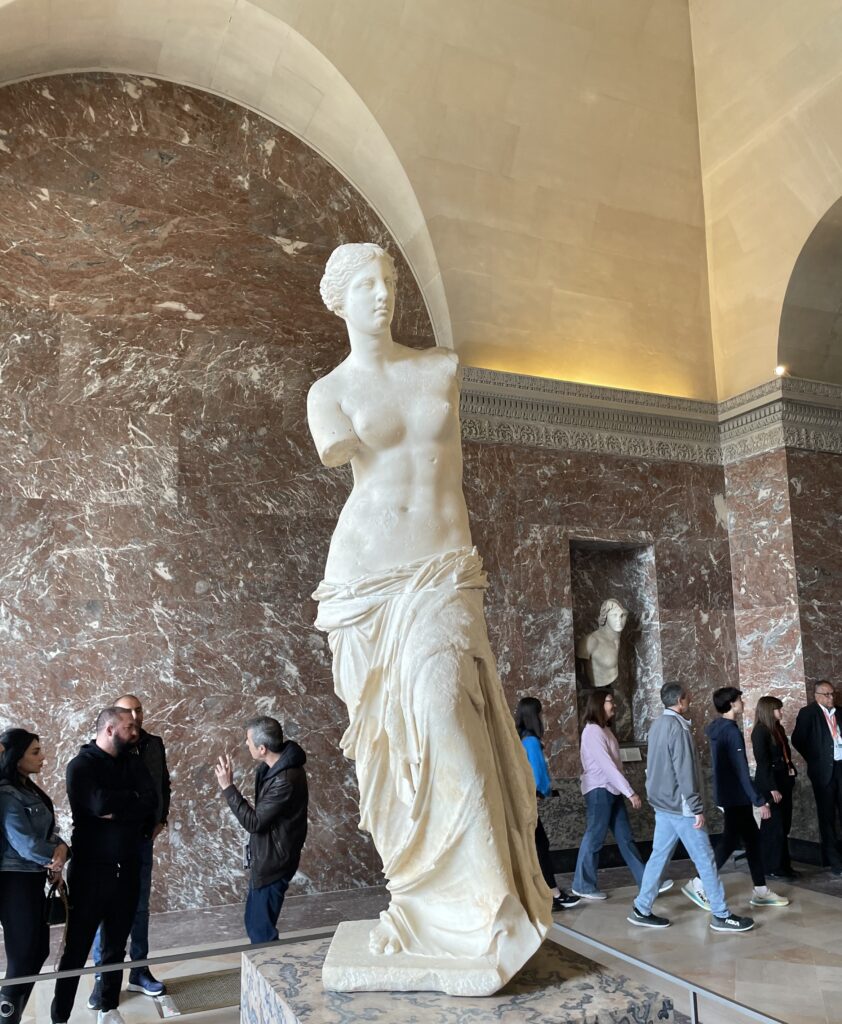
Schulz, Jacob Photo of Venus De Milo 2024 CC BY 4.0
Scrolling through my own camera roll I found an image that I thought could be improved using some simple cropping techniques. I was fortunate enough to be able to visit Paris last spring and while there I was able to visit the Louvre Museum. While I was there the museum had a considerably large crowd which featured tourists from all over the world. The two most popular attractions of the Louvre were the Mona Lisa, and Venus de Milo. The latter was my favorite of the two but I struggled to get a good photo of where the room the Venus de Milo is kept in appeared empty. I along with many other visitors longed to have a moment alone in a room with a priceless piece of ancient art and so I cropped the image to change the experience of the viewer for the better.
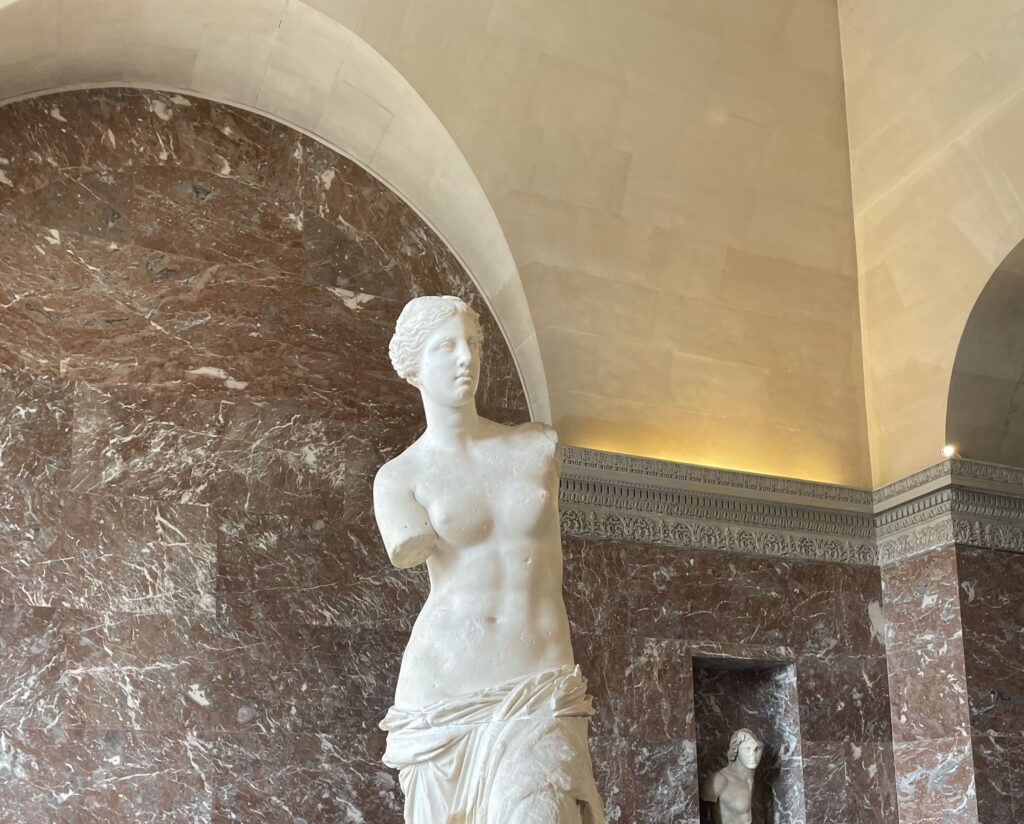
Schulz, Jacob Cropped Photo of Venus De Milo 2024 CC BY 4.0
Following the rule of thirds the cropped image resets focus directly towards the Venus de Milo and away from the hustle and bustle of busy tourists venturing through the museum. Although I believe the Venus de Milo is the main focal point of both images, removing the bottom third of the image removes distracting elements such as the barricade below the statue and the distracting line of people walking by as well. As well the cropping also changes the coloring to feature a much warmer theme where there is now mainly pink marble and yellow light as the background to the white statue. Before cold colors such as on one girls blue sweater also could have distracted the viewer and contrasted sharply with the pink marble meant to be the background color for the statue.
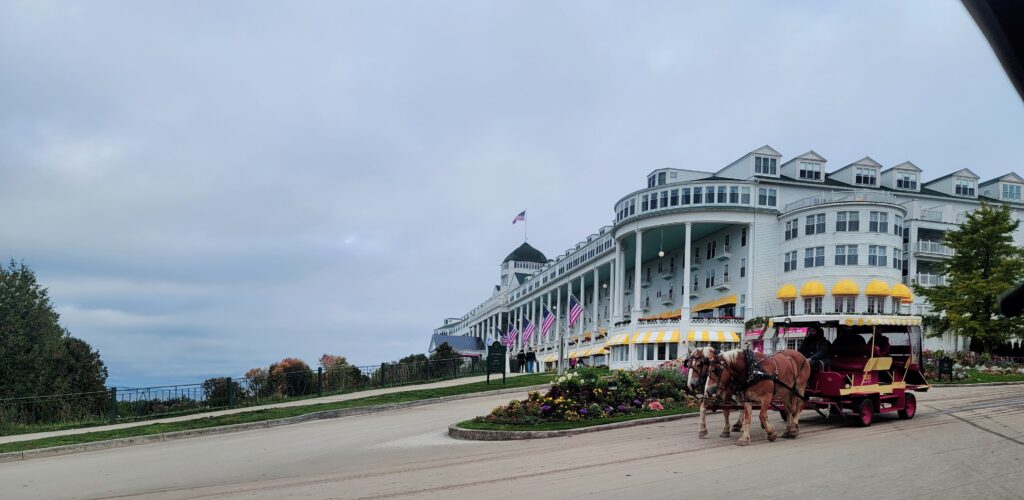
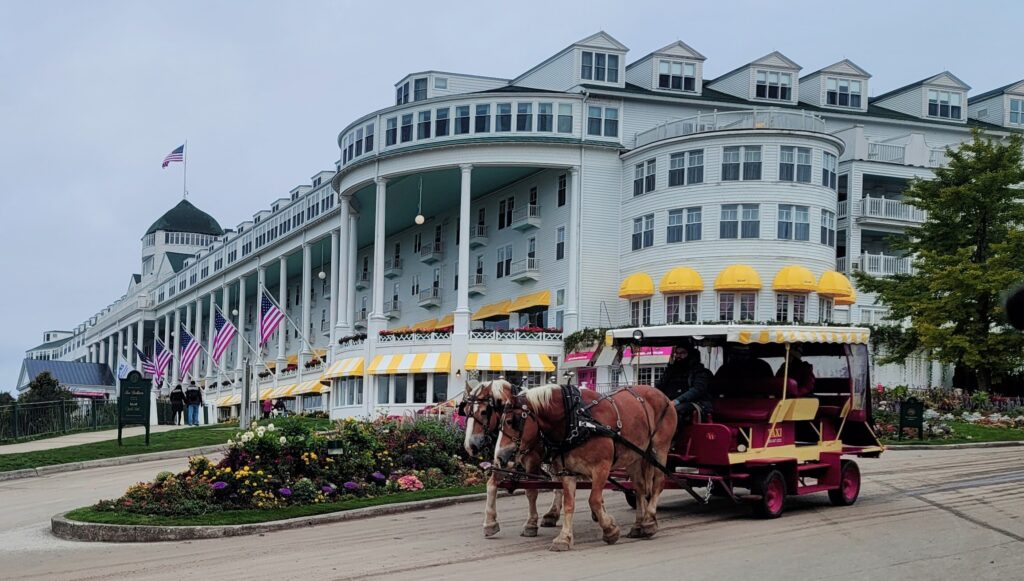
Photography is not just about capturing a moment; it’s about telling a story. Recently, I had the opportunity to photograph the iconic Grand Hotel on Mackinac Island, Michigan. While the initial image had its charm, I realized that it didn’t quite capture the essence of this historic landmark. After some thoughtful cropping, the transformation was remarkable. In this post, I’ll share what was wrong with my original image and how cropping helped me highlight the beauty of the Grand Hotel.
When I first took the photo of the Grand Hotel, I was excited about the scene. However, upon reviewing the image, I noticed a few issues that detracted from its overall impact:
In the final version of the photo the following cropping concepts were effectively utilized:
Cropping can be a powerful tool in photography, transforming an ordinary image into something extraordinary. My initial photo of the Grand Hotel had potential, but it was the act of cropping that truly brought its beauty to life. By eliminating distractions and focusing on the hotel and carriage, I was able to create a compelling image that captures the essence of this historic landmark.